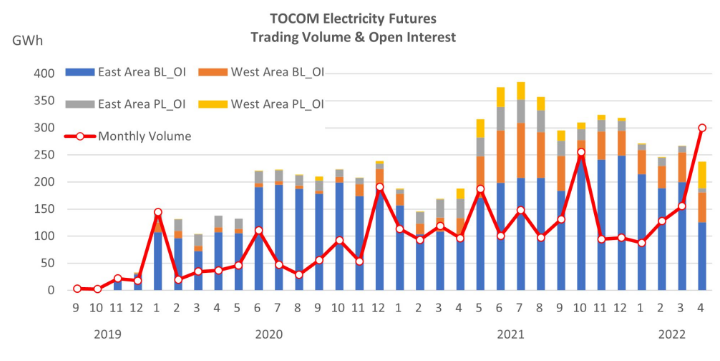TOCOM Energy
JPX Energy Market Updates(Oct. 3, 2022)
Welcome back to JPX energy market weekly updates.
The supply side factors had been the main driver of oil price fluctuations last week, rising geopolitical tensions in Europe, the possibility of further OPEC+ production cuts, as well as a pullback in the U.S. dollar continued to lend support as crude oil futures had clawed back some earlier losses.
Focus now switches to OPEC+ meeting, with most traders expecting some form of cut, Russia and Saudi Arabia said to be considering a group reduction of around 1 million bpd. but any headline cut will fall short in reality with the group currently missing production quotas by around 3.4 million bpd.
This will be followed by Saudi November OSPs, which, based on the current market structure, the key M1/M3 Dubai cash spread, monitored by Saudi Aramco and other Middle East National Oil Companies, averaged $5.36/b in September compared to $4.89/b in August, flagging a small increase in Official Selling Prices (OSPs) for November-loading barrels for Asia customers.
As for the interregional spread, Asia cash November Brent averaged $91.15/b over the month, down 6.7% from the Oct average of $97.70/b, while the Brent/Dubai cash spread crunched to an average of $0.24/b, compared to the previous contract average of $1.12/b.
The spread has flipped between positive and negative throughout the month, leaving the narrowest Brent/Dubai spread since the height of the pandemic when Brent prices collapsed in Q2 2020. The Brent/Dubai crunch was seen more as a symptom of Brent weakness, with North Sea marker grades facing stiff competition from WTI Midland and West African barrels.
The suspected sabotage of the Nord Stream pipelines was seen as potentially heightening European energy security, meanwhile, the European Commission on Wednesday set out its proposal for an eighth package of sanctions against Russia, including a ban on European companies from shipping Russian oil to third countries above an internationally set price cap, albeit with an uncertain timeline.
That limit will be above the marginal production cost of Russian oil but below market prices. It is likely to be close to the price being paid today for Russian oil in Asia, or around 30% below Brent, roughly $60/b,. The US hopes the price cap will be agreed upon at least a month before the EU's sanctions kick in on Dec. 5 and Feb. 5 for crude and products, respectively.
A lot rests on the maritime insurance market to monitor Russian seagoing oil and enforce the cap, about 95% of the global oil tanker fleet is covered by shipping insurers in G7 countries. However, Russia has already established an alternative reinsurance company for its maritime fleet, which China and India have accepted. On the other hand, Russia's ability to sidestep the price cap by using domestic or non-G7-regulated shipping and tanker insurance from countries not imposing the price cap, is seen as limited due to a shortage of spare tanker capacity.
Besides crude and oil products, a total of 15 EU member states have called on the European Commission to present a proposal for a price cap on all gas transactions given the worsening European energy crisis. It remains unclear whether the EC is considering a cap on the price of imported gas, on the wholesale price of gas, or whether a more general retail price cap could be considered. Some in industry have warned also that any cap on the price of European gas could lead to an increase in consumption at a time when the EU is striving to cut gas demand. The global LNG market in particular remains very competitive, with Asia also looking to secure cargoes over the winter.
On the oil product market, European diesel crack spread climbed as natural gas price soared and supply outlook tightened.
Russia's seaborne oil exports fell 6% to a new post-Ukraine war low in the first half of September, according to Kpler. As Russian volumes fall ahead of sanctions, growing US imports mean the US is set to become Europe's biggest supplier of oil in the coming months. Latest weekly data from the Energy Information showed US supply is tightening as seasonal maintenance gets underway, refinery output hitting a four-month low.
sources said China might extend the duration of the proposed volume of 15 million tonnes into next year to cushion its impact on global markets and avoid a price crash. The proposed volume would mean a 63% jump from the 24 million tonnes released so far for 2022, too large to be practical and risk crashing refiners’margins.
That’s all we have for this week, welcome back next week.






